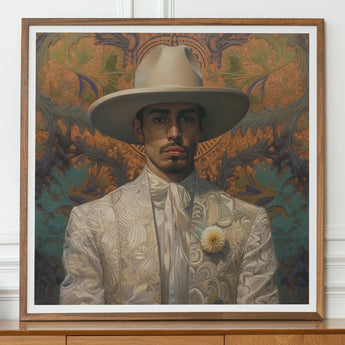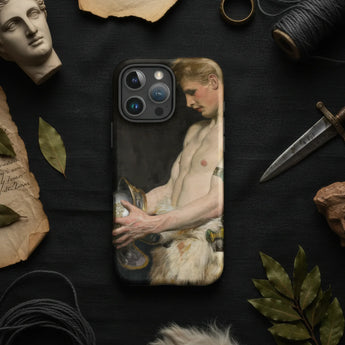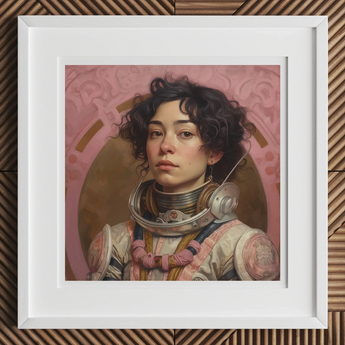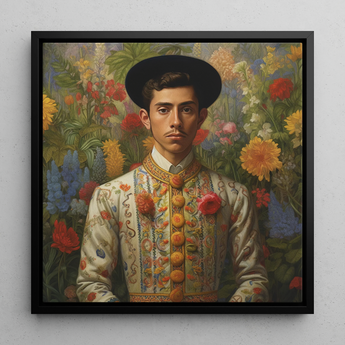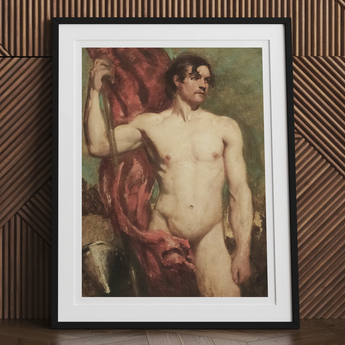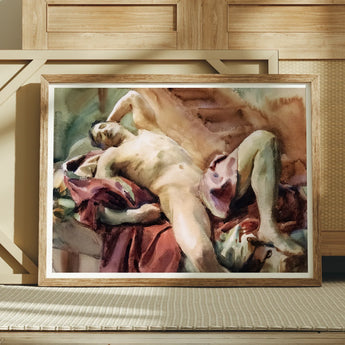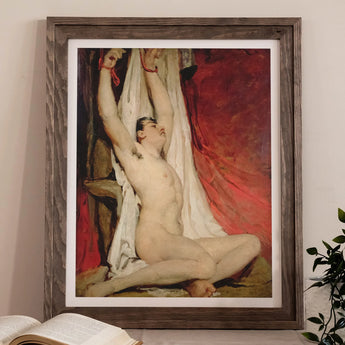Gay Cowboy Art
Unleash your inner maverick with this gay cowboy art collection. A bold frontier where the untamed spirit of the Wild West collides with the unapologetic queer expression of a gay cowboy artist who wants you riding into the sunset with a new beau. And this isn't your typical rodeo. It's a kaleidoscopic roundup of vintage homosexual cowboys, gay vaquero art, queer gauchos and every kind of flamboyant outlaw inbetween. All lassoing stereotypes and branding them with rainbow irons.

Quick view 
Quick view 
Quick view 
Quick view 
Quick view 
Quick view 
Quick view 
Quick view 
Quick view 
Quick view 
Quick view 
Quick view 
Quick view 
Quick view 
Quick view 
Quick view 
Quick view 
Quick view 
Quick view 
Quick view 
Quick view 
Quick view 
Quick view 
Quick view 
Quick view 
Quick view 
Quick view 
Quick view -
Your Latest Loves
FAQs
About this collection
Howdy, let's dive right into this unexpected world of gay cowboy art. Think dusty sunsets, leather chaps…and a whole lot of queer dreaming.
See, the cowboy myth is baked into the American psyche – the rugged individual, conquering the wild. But this gay cowboy art blasts open that stereotype. Pieces are about love, identity, and finding your place in a world that tries to box you in.
Picture Brokeback Mountain through a prism, where every brushstroke defies convention and each canvas is a Pride parade on the prairie. Corralling the essence of rugged individualism, then drenching it in a Technicolor palette that would make even the most stoic cowpoke blush. From tender embraces beneath star-studded skies to defiant gazes that could tame a bucking bronco, these vintage fashion plates rewrite the cowboy mythos with a queer aesthetic.
Hang one of these museum-quality giclée prints in your space and watch as this queer cowboy art transforms the room into a sanctuary of acceptance, celebration and sartorial splendor. Each ranch rider turns life into a hoedown with a boot scootin' queer vaquero. This isn't just gay cowboy art – it's a cultural revolution wrapped in finery and spurs, reimagining American iconography through a lens of gay love, diversity, and the courage to be yourself in a world that can feel as vast and unforgiving as the open range.
These aren't your granddad's cowboys. They're classic portraits reimagined. A tender moment between LGBTQ cowboys gazing straight into the lens of their lovers eyes. Making you sit up and question everything you thought you knew about the rugged Wild West.
Now, let's talk real change. Your walls are a blank canvas. Hang a piece of queer Western wall art and BOOM – you've made a statement. Or it could be a phone case that gets folks curious. A museum-quality giclée print that dominates the room, perhaps. This isn't just about decor, it's about saying, "This space celebrates love, bravery, and being exactly who you are."
That's the deal: these images are conversation starters. They're about sparking dialogue, challenging norms, and finding a spark of recognition in the unexpected. They're about the power of art to transform not just your home, but how you see the world.
What is the history of gay cowboy art?
The history of gay cowboy art can be traced back to artists like George Quaintance and Tom of Finland, who created homoerotic and camp visuals featuring cowboys. George Quaintance, active in the 1940s and 1950s, was known for his kitsch, homoerotic art that depicted idealized male images in a rugged, masculine, and romantic context. His work helped popularize Levi's jeans as a sexy and serviceable garment. Tom of Finland, another influential artist, also contributed to the genre with his erotic illustrations.
The cowboy has long been a symbol of American masculinity, and over the decades, many queer artists have made winking references to cowboy culture. The concept of gay cowboys has made its way into various aspects of pop culture, including punk rock, with Vivian Westwood's iconic T-shirt featuring two cowboys with genitalia almost touching. The film Brokeback Mountain further popularized the idea of gay cowboys in mainstream media.
In recent years, a new generation of artists has been creating a queer mythology around the cowboy figure, emphasizing the changing race and gender dynamics in the American West. This builds on past efforts by writers, artists, and filmmakers like Kahlil Joseph and Chandra McCormick, who celebrated the nonwhite cowboys that have always been an integral part of Western culture.
Overall, gay cowboy art has evolved over time, with artists like George Quaintance and Tom of Finland pioneering the genre and newer artists continuing to explore and redefine the concept of queer cowboys in the American West.
What is the significance of gay cowboy art in LGBTQ+ culture?
Gay cowboy art holds significance in LGBTQ+ culture as it challenges traditional notions of masculinity and explores the complexities of queer identity in the context of the American West. Artists like George Quaintance and Tom of Finland were pioneers in creating homoerotic visuals featuring cowboys, which helped to redefine the cowboy as a symbol of American masculinity. Queer cowboys have made their way into various aspects of pop culture, including punk rock and film, further popularizing the idea of gay cowboys in mainstream media.
The cowboy figure has long been associated with ruggedness, ingenuity, and fearlessness, qualities that are often seen as antithetical to same-sex desire. However, gay cowboy art challenges these stereotypes by presenting cowboys as queer individuals who can still embody these traditionally masculine traits. This subversion of expectations has allowed for a richer exploration of queer identity and representation in art and popular culture.
What are some common themes of gay cowboy art?
Some common themes in gay cowboy art include:
- Challenging traditional masculinity: Gay cowboy art often subverts the conventional image of the cowboy as a symbol of rugged, masculine American identity, presenting cowboys as queer individuals who can still embody these traditionally masculine traits.
- Queer aesthetics: Artists often incorporate queer aesthetics into their work, blending elements of camp, homoeroticism, and non-normative gender expressions to create a unique visual language.
- Romantic and erotic relationships: Many gay cowboy artworks depict romantic or erotic relationships between cowboys, exploring themes of love, desire, and intimacy in the context of the American West.
- Diverse representation: Recent gay cowboy art has emphasized the changing race and gender dynamics in the American West, highlighting the presence of nonwhite and nonbinary cowboys who have always been an integral part of Western culture.
- Connection to popular culture: Gay cowboy art has made its way into various aspects of pop culture, including punk rock, film, and fashion, further popularizing the idea of gay cowboys in mainstream media.
- Personal mythology: Some artists create their own personal mythology around the cowboy figure, drawing on their own experiences and cultural backgrounds to inform their work.
Overall, gay cowboy art explores themes of identity, representation, and the complexities of queer life in the context of the American West, challenging traditional notions of masculinity and offering new perspectives on the iconic cowboy figure.
What does the figure of the cowboy symbolise?
The archetype of the Wild West cowboy represents the rugged individualism, adventurous spirit, and hard work of the American West. This iconic figure is often associated with strength, self-reliance, and determination. The cowboy symbolizes the spirit of independence and adventure that continues to inspire and captivate people worldwide.
How has the cowboy figure been adapted in different cultures?
The cowboy has been adapted in different cultures, often reflecting the values and characteristics associated with the American West, such as rugged individualism, adventurous spirit, and hard work. For instance, the gauchos of the Pampas in Argentina, Uruguay, and Brazil share similarities with the American cowboy, as they are skilled horsemen who work with cattle and embody a sense of independence and self-reliance.
In other instances, the cowboy archetype has been reimagined and adapted to fit the cultural context of specific countries. For example, the samurai in Japan and knights in Europe can be seen as cultural equivalents to the American cowboy, as they are iconic figures that have become foundational to the identity of their respective cultures. These figures often represent values such as honor, loyalty, and bravery, which resonate with the cowboy archetype.
In contemporary settings, the cowboy archetype has been adapted and incorporated into various forms of media, such as film and advertising, often reflecting the values and characteristics associated with the American West. Additionally, the cowboy figure has been used in drag king performances, where the classical Hollywood cowboy is reinvented, displaying both hypermasculinity and queerness.
How has the representation of LGBTQ+ themes in art changed over time?
The representation of LGBTQ+ themes in art has changed significantly over time, evolving from subtle and hidden depictions to more open and explicit expressions of queer identity. In the past, LGBTQ+ themes were often concealed or coded due to societal norms and legal restrictions. However, as societal attitudes shifted and LGBTQ+ rights progressed, queer art became more visible and diverse, addressing issues of identity, gender, and sexuality.
In the 1960s, the Queer Art movement emerged as a powerful political and celebratory term to describe the art and experience of LGBTQ+ individuals. Queer Art encompasses various styles and trends, including painting, photography, and conceptual representations of queerness, often addressing issues of identity, gender, and sexuality. The movement has been influenced by artists like Andy Warhol, who engaged in issues of identity, gender, and sexuality.
Over the years, LGBTQ+ artists have used their work to challenge societal norms, demand equality, and fight for LGBTQ+ rights. Queer art has expanded to include diverse representation, with artists like Zanele Muholi and Mickalene Thomas celebrating black queer women and challenging mainstream beauty standards. Today, queer art continues to evolve, with artists exploring the depths of queer life, culture, and norms, and pushing the boundaries of artistic expression.
Overall, the representation of LGBTQ+ themes in art has changed dramatically over time, reflecting the progress and challenges faced by the LGBTQ+ community and contributing to a richer understanding of queer identity and experiences.
Where can my order ship to?
Any treasure you find here can be shipped to:
North America
Canada, Mexico, Continental United States
South America
Argentina, Brazil
Europe
Albania, Andorra, Austria, Belgium, Bosnia & Herzegovina, Bulgaria, Croatia, Cyprus, Czechia, Denmark, Estonia, Faroe Islands, Finland, France, Germany, Gibraltar, Greece, Greenland, Guernsey, Hungary, Iceland, Ireland, Isle of Man, Italy, Jersey, Kosovo, Latvia, Liechtenstein, Lithuania, Luxembourg, Malta, Monaco, Montenegro, Netherlands, North Macedonia, Norway, Poland, Portugal, Romania, Russia, San Marino, Serbia, Slovakia, Slovenia, Spain, Sweden, Switzerland, United Kingdom, Vatican City
Middle East & Asia
China, Hong Kong, India, Indonesia, Israel, Japan, Lebanon, Malaysia, Philippines, Singapore, South Korea, Taiwan, Thailand, Türkiye, United Arab Emirates, Vietnam
Africa
South Africa
Oceania
Australia, New Zealand
—
Every package tracked so you can watch your treasure move from A to B to You.
Sent carbon neutral at no extra charge. Helping you gain peace of mind your money's being kind.
Orders to the rest of the world coming as soon as I can!
How much will shipping cost?
Delivery to 60+ countries
Free shipping worldwide — check if we ship to you
When will my package arrive?
USA: 4-9 days • Canada: 5-12 days • UK: 4-9 days • Europe: 5-10 days • Australia: 4-9 days • New Zealand: 5-12 days • Rest of the world: 3-4 weeks
Why the wait? Every treasure you find here is produced after you purchase. So the delivery times include production, quality assurance, thoughtful packaging and shipping. More details on orders and shipping
Every package tracked so you can watch your treasure move from A to B to You.
Sent carbon neutral at no extra charge. Helping you gain peace of mind your money's being kind.
Can I return my order?
1. Open Request
You're welcome to open a return / exchange request within 30 days of your order's delivery. All items for return must be delivered back in their original condition, with their original packaging included.
2. Wait For Approval
Expect a reply within 24-48hr
Once your return's approved, you'll receive the return address, so you can mail items back with confidence. Please wait for approval before mailing anything, to avoid confusion and disappointment.
3. Return Items
Return shipping: You pay for return shipping fees unless you received faulty / incorrect items or they get damaged in transit.
Tracking: Please send your items back with tracking. No refunds can be given for items that aren't received.
On sale: No returns or exchanges for discounted / on sale items unless they arrived damaged or faulty.
Payment method: After your return's approved, you'll be refunded via your original payment method.
...
Learn more about my step-by-step returns process.




